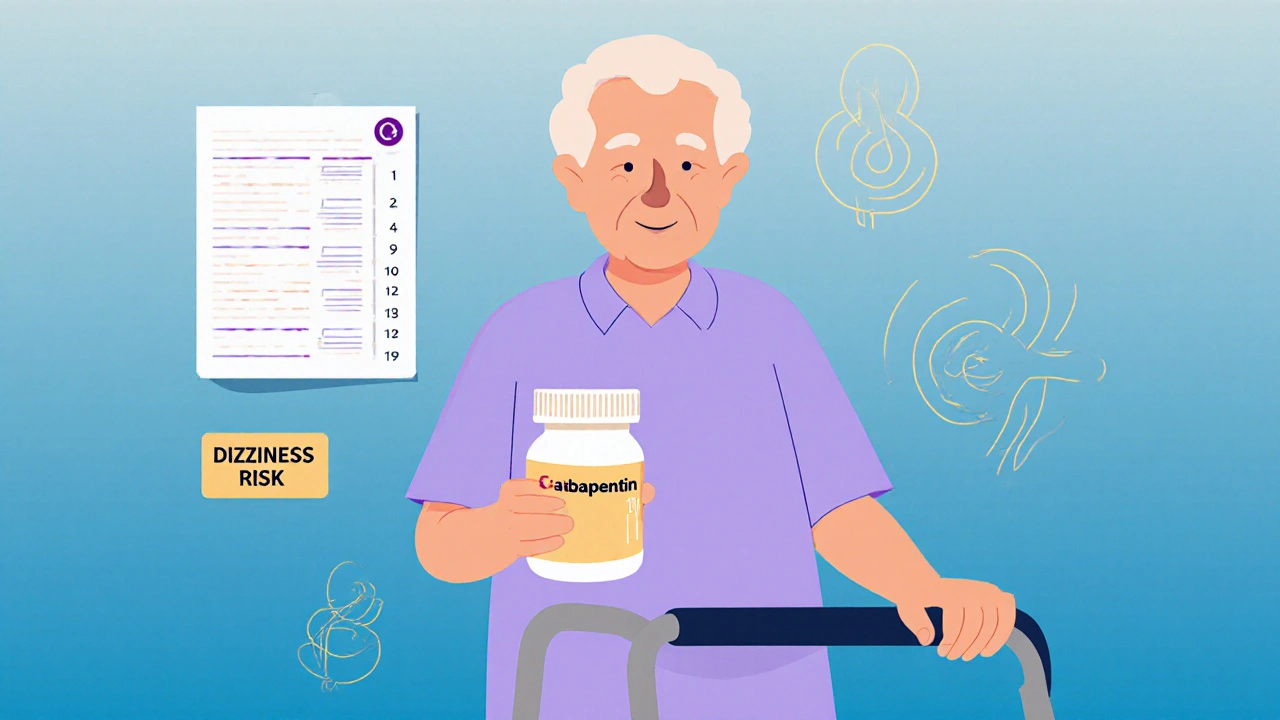Gabapentin Dosing: Safe Amounts, Side Effects, and What Your Doctor Needs to Know
When you're prescribed gabapentin, a nerve pain and seizure medication that works by calming overactive brain signals. Also known as Neurontin, it's one of the most common drugs for chronic nerve pain, but getting the dose wrong can mean side effects—or no relief at all. Unlike antibiotics or blood pressure pills, gabapentin doesn’t follow a one-size-fits-all rule. Your dose depends on what you’re treating, how old you are, and most importantly, how well your kidneys are working.
For nerve pain, like diabetic neuropathy or post-shingles pain, most adults start at 300 mg once a day and slowly increase to 1,800–3,600 mg split into three doses. But if you’re over 65 or have kidney problems, a condition that slows how fast your body clears the drug, your doctor might keep you on 300 mg a day or even less. That’s because gabapentin isn’t broken down by the liver—it’s flushed out by your kidneys. If they’re not working right, the drug builds up and can make you dizzy, sleepy, or even confused. That’s why doctors check your kidney function before starting and sometimes again after a few weeks.
For seizures, especially in adults with epilepsy, the starting dose is usually 300 mg three times a day. It takes time to build up in your system, so your doctor will likely increase it slowly over weeks. Missing a dose or stopping suddenly can trigger seizures—even if you’ve been taking it for months. That’s why consistency matters more than the exact number on the bottle.
Many people take gabapentin for anxiety, even though it’s not FDA-approved for that. If your doctor prescribes it this way, the dose is often lower—around 300–600 mg daily. But don’t assume it’s safe just because it’s used off-label. Gabapentin can interact with painkillers, sleep aids, and even antacids. Taking it with opioids, for example, raises the risk of dangerous breathing problems. And if you’ve ever had a reaction to another nerve medication, tell your doctor. It’s not just about the dose—it’s about your whole health picture.
Side effects like drowsiness, swelling in your hands or feet, or trouble concentrating are common at first. They often fade as your body adjusts. But if you feel unusually tired, have blurred vision, or start having mood changes—like depression or thoughts of self-harm—call your doctor right away. These aren’t normal. And if you’re pregnant or planning to be, gabapentin isn’t off-limits, but it needs careful monitoring.
Below you’ll find real-world advice from posts that dig into how gabapentin fits into bigger health pictures—from how kidney function changes dosing, to how it stacks up against other nerve pain meds, and what happens when you mix it with other drugs. No guesswork. Just clear, practical info to help you talk smarter with your doctor.
Gabapentinoid Safety: Safe Dosing, Managing Dizziness, and Preventing Misuse
Gabapentin and pregabalin are commonly prescribed for nerve pain, but high doses increase dizziness, fall risk, and misuse. Learn safe dosing, how to spot danger signs, and what to ask your doctor to stay protected.

